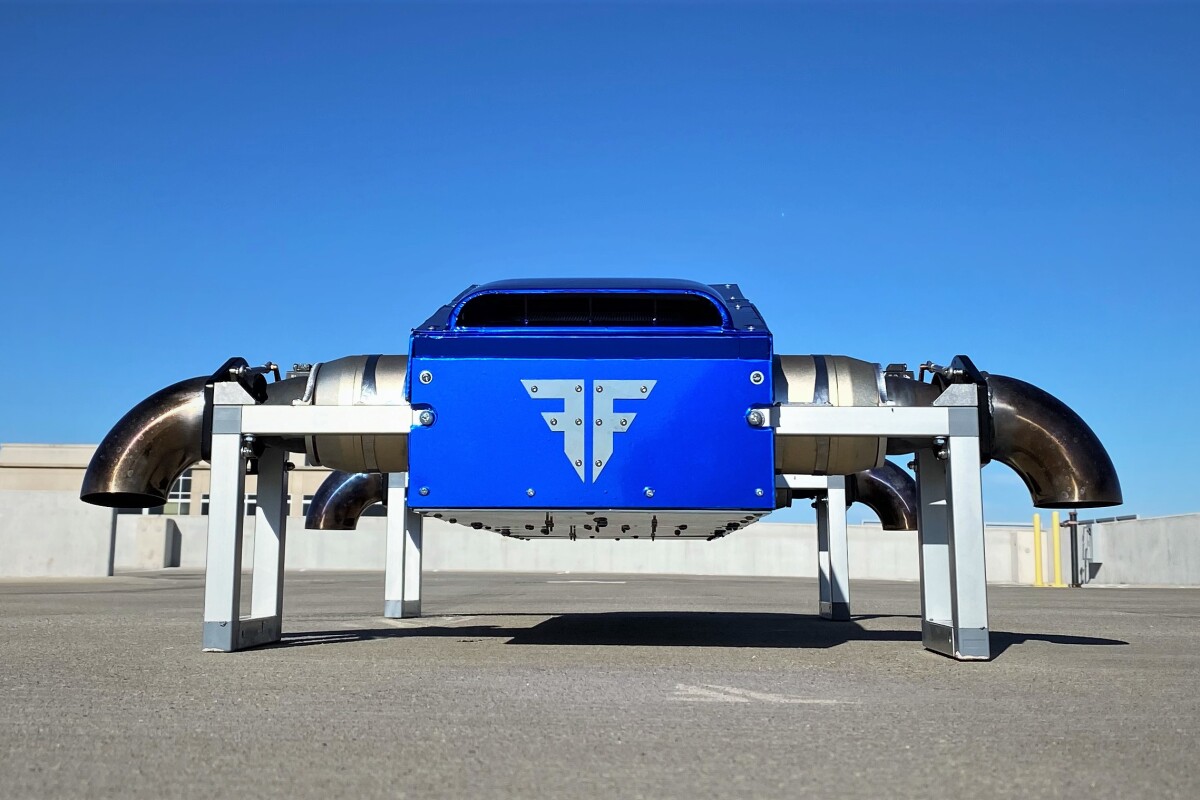Two years ago we first heard about the AB5 JetQuad, a jet-powered VTOL (vertical take-off and landing) drone. Well, it's time to meet its new-and-improved successor, the AB6. Among other things, it has an estimated top speed of 250 mph.
Manufactured by Texas-based aerospace company FusionFlight, the AB6 JetQuad could be thought of as a quadcopter with four micro-turbine jet engines instead of rotors.
The engines are improved over those on the AB5, as are the fuel and electrical systems, the frame (which now protects the engines), and the thrust-vectoring system – the latter allows the engine nozzles to be independently angled fore and aft, letting the aircraft perform vertical take-offs and landings, hover on the spot, and transition into forward flight.

FusionFlight CEO/Founder Alex Taits tells us that based on computer simulations, the drone should be capable of travelling at speeds of up to 250 mph (402 km/h) – and that's with its existing practical-but-boxy frame. Adding an aerodynamics package could theoretically boost that figure all the way to 400 mph (644 km/h).
One fill of the AB6's 20-liter (5.3-gal) fuel tank is claimed to be good for 25 minutes of hovering or 15 minutes of top-speed forward flight, if the maximum 18-kg (40-lb) payload is being carried – those performance figures increase for lighter loads. Cargo can be mounted in the undercarriage, or (if it's small enough) placed in a compartment within the drone. New onboard generators can be used to power devices such as cameras or sensors.

The aircraft itself weighs 24 kg (53 lb) – the fuel adds another 20 kg (44 lb) – and measures 1,205 mm long by 931 mm wide by 402 mm high (47.4 by 36.7 by 15.8 in). It runs on diesel, kerosene or jet-A fuel, with its four engines delivering a combined 700 newtons of thrust. Users can program in waypoints for autonomous flight, or remotely control the drone in real time up to a maximum range of 50 km (31 miles). That said, if a SATCOM receiver were to be added, the AB6 could be satellite-controlled from pretty much anywhere in the world.
Some of the possible uses for the drone include emergency medical supply delivery and long-range surveillance. Because it doesn't have any external air foils that could ice up, it should handle inclement weather better than rotor or fixed-wing drones. Additionally, its jet engines allow it to reach altitudes of up to 11 km (6.8 mi).
Taits informs us that the AB6 JetQuad should be available for purchase as of next summer (Northern Hemisphere), priced at US$100,000. The prototype is currently undergoing qualification testing. You can see it in action, in the video below.
Source: FusionFlight







